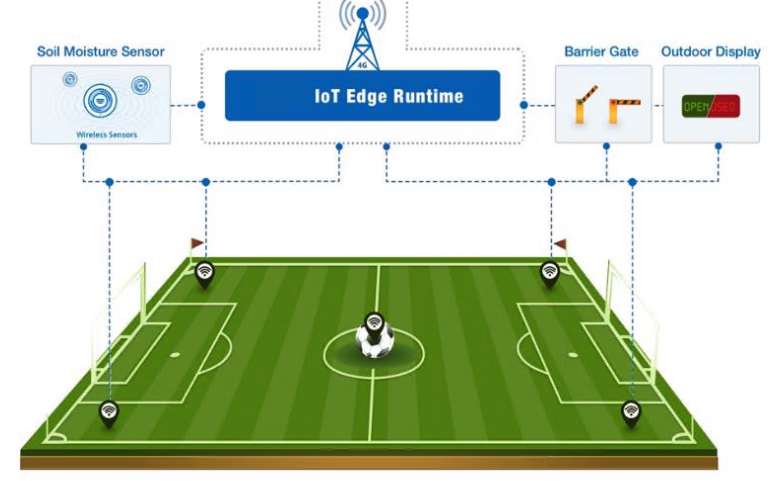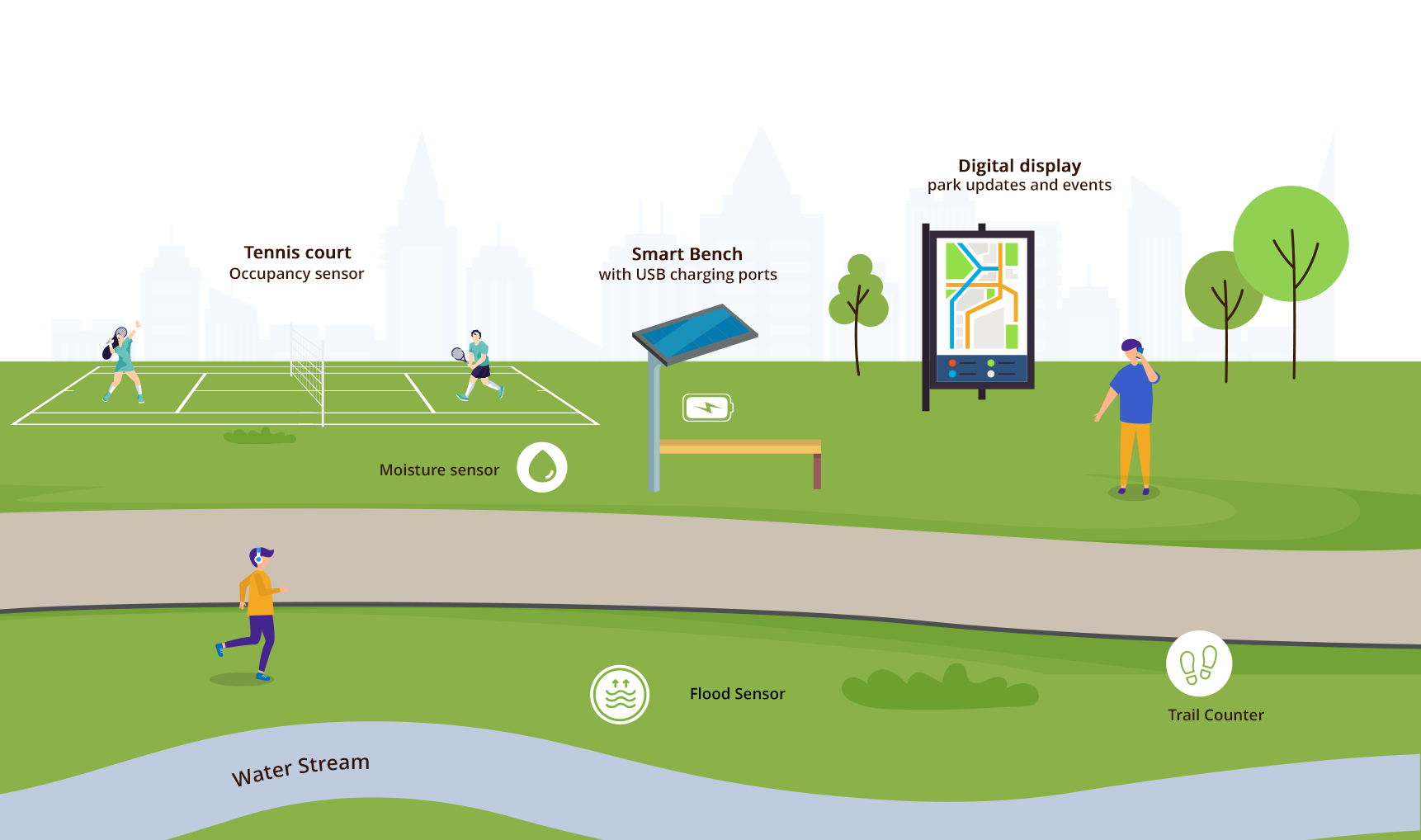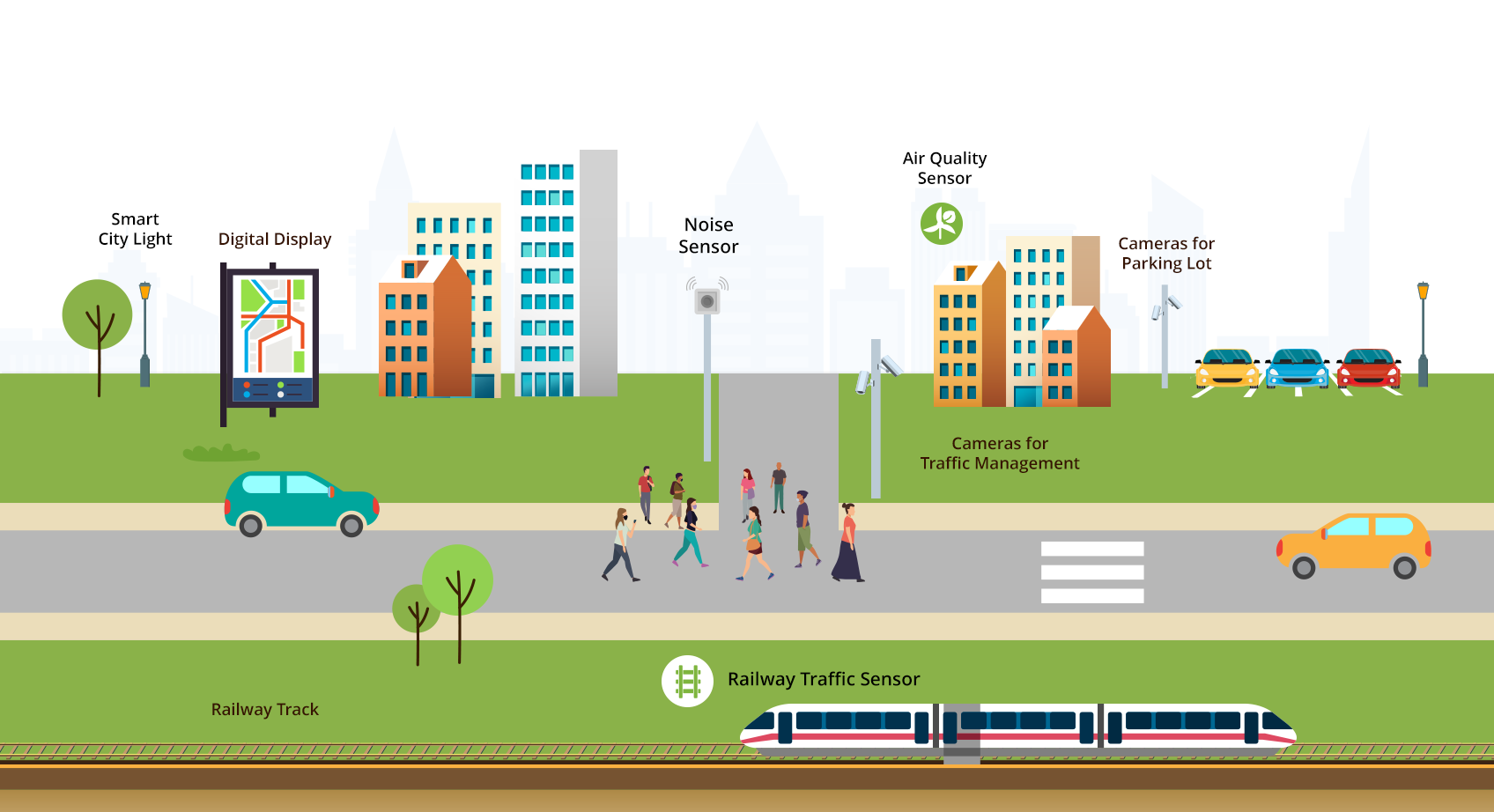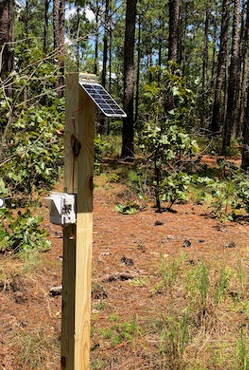As urban landscapes evolve, so do the green spaces within them. Today’s parks are no longer just passive recreational areas; they’re becoming dynamic, responsive environments that leverage cutting-edge technology to enhance visitor experiences and contribute to broader smart city initiatives. Let’s explore three exciting trends that are reshaping our urban oases. 1. Smart Benches: More Than Just a Place to Sit Gone are the days when park benches were simply places to rest. The new generation of smart benches is transforming these humble fixtures into multifunctional hubs of connectivity and convenience. Solar-Powered Connectivity Smart benches often come equipped with solar panels, allowing them to generate their own clean energy. This self-sufficiency not only reduces operational costs but also aligns with cities’ sustainability goals. Charging Stations on the Go One of the most appreciated features of smart benches is their ability to charge mobile devices. USB ports and wireless charging pads are seamlessly integrated into the design, allowing park-goers to top up their batteries while enjoying the outdoors. Wi-Fi Hotspots Many smart benches double as Wi-Fi hotspots, extending internet connectivity throughout the park. This feature not only enhances visitor convenience but also supports various IoT devices and sensors deployed in the area. Environmental Monitoring Some advanced models incorporate sensors that monitor air quality, temperature, and humidity. This data can be invaluable for city planners and environmental scientists tracking urban microclimates and pollution levels. Interactive Information Displays Touchscreen displays on smart benches can provide park maps, event schedules, and real-time information about park facilities. Some even offer interactive games or educational content about local flora and fauna. The integration of smart benches is just the beginning. As these technologies become more widespread, we can expect to see increased engagement from park visitors and more efficient management of park resources. 2. Intelligent Irrigation: Precision Water Management Water conservation is a critical concern for many cities, and parks are often significant consumers of this precious resource. Intelligent irrigation systems are emerging as a game-changer in park management, offering precision control and substantial water savings. Soil Moisture Sensors By embedding sensors throughout park grounds, irrigation systems can now detect the exact moisture content of the soil. This granular data allows for targeted watering, ensuring that each area receives precisely the amount of water it needs – no more, no less. Weather-Based Controls Advanced irrigation systems integrate local weather forecasts into their decision-making processes. If rain is predicted, the system can automatically adjust or postpone watering schedules, preventing wasteful overwatering. Leak Detection Intelligent systems can quickly identify unusual water flow patterns that may indicate leaks. This rapid response capability can save thousands of gallons of water and prevent damage to park infrastructure. Remote Management Park managers can now control irrigation systems from their smartphones or tablets. This remote access allows for real-time adjustments and rapid response to changing conditions, even when staff are not physically present in the park. Data-Driven Landscaping The wealth of data collected by these systems is helping park designers make more informed decisions about plant selection and placement. By understanding microclimates within the park, they can choose species that will thrive in specific locations, reducing the need for intensive irrigation. The implementation of intelligent irrigation not only conserves water but also promotes healthier plant growth, reduces maintenance costs, and allows parks to remain lush and inviting even in drought-prone areas. 3. Climate Resilience: Parks as Urban Safeguards As cities grapple with the impacts of climate change, parks are being reimagined as critical infrastructure for climate resilience. Innovative technologies are enabling these green spaces to play a vital role in mitigating environmental challenges. Flood Mitigation Through Smart Design Parks in flood-prone areas are being redesigned with permeable surfaces and underground water storage systems. Smart sensors monitor water levels and can automatically activate pumps or open drainage channels to manage excess water during heavy rainfall events. Urban Heat Island Reduction Strategic placement of trees and green spaces, guided by thermal imaging and microclimate sensors, helps combat the urban heat island effect. Some parks are experimenting with “cool pavements” that reflect more sunlight and absorb less heat than traditional materials. Air Quality Improvement Beyond passive air filtration by vegetation, some parks are installing active air purification systems. These can range from photocatalytic surfaces that break down pollutants to strategically placed “smog-eating” sculptures that filter particulates from the air. Biodiversity Monitoring Advanced camera systems and AI-powered image recognition are being used to track wildlife populations and plant health. This data helps park managers maintain ecological balance and respond quickly to invasive species or disease outbreaks. Renewable Energy Generation Some forward-thinking parks are incorporating renewable energy generation into their design. Solar walkways, wind turbines disguised as public art, and even piezoelectric systems that generate electricity from footsteps are turning parks into clean energy producers. Community Education and Engagement Interactive displays and augmented reality apps are being used to educate visitors about climate change and resilience strategies. Some parks host “living labs” where visitors can see climate adaptation techniques in action and learn how to apply them in their own lives. By embracing these climate resilience technologies, parks are not only protecting themselves from environmental threats but are also serving as models for sustainable urban development. The Future is Green and Smart As we’ve seen, the integration of technology into urban parks is creating spaces that are more engaging, efficient, and resilient. Smart benches are redefining how we interact with park amenities, intelligent irrigation is revolutionizing water management, and climate resilience strategies are positioning parks as crucial components of sustainable urban infrastructure. These advancements are not just about adding gadgets to our green spaces. They represent a fundamental shift in how we conceive of parks in the urban fabric. Parks are becoming active participants in city life, contributing to data collection, environmental management, and community engagement in ways that were unimaginable just a few years ago. As we look to the future, we can expect to see even greater integration between parks and
Parks and Recreation directors across the country are embracing innovative technologies to enhance their operations and visitor experiences. Here’s how cutting-edge tech is reshaping the landscape of community green spaces and recreational programs: 1. Smart Park Wi-Fi: The Digital Oasis Many directors have found that implementing Wi-Fi throughout their parks is a game-changer. Visitors are staying longer, sharing their experiences on social media, and inadvertently becoming brand ambassadors for these green spaces. It’s a win-win situation that boosts engagement and provides free marketing for parks. 2. Virtual Tours and Augmented Reality: Parks Without Borders Virtual tours have become an essential tool for Parks and Rec departments. These digital experiences allow people to explore parks from the comfort of their homes, making them accessible to those with mobility challenges or those planning future visits. But the excitement doesn’t stop there! Augmented Reality (AR) and Extended Reality (XR) are taking park visits to a whole new level. Imagine visitors pointing their smartphones at a tree and instantly seeing information about its species, age, and ecological importance. Or picture families going on AR-powered scavenger hunts that blend the digital and natural worlds. These technologies are not just enhancing visits; they’re creating entirely new ways to interact with and learn from our parks. 3. Streamlined Online Registration: Say Goodbye to Paperwork Online registration systems have revolutionized how departments manage program sign-ups. Directors report significant increases in participation for summer camps, fitness classes, and other activities. The ease of use for both staff and community members has made this technology a must-have for modern Parks and Rec departments. 4. Mobile Apps: Parks in Your Pocket Department-specific mobile apps have become indispensable tools for both visitors and staff. These apps provide easy access to trail maps, event schedules, and real-time updates about park conditions. But the functionality doesn’t stop there. Many directors are now incorporating features that provide real-time occupancy status for popular amenities like pickleball and tennis courts. Imagine a park visitor checking their phone to see if a court is available before making the trip. Some apps even integrate with weather warning systems, sending push notifications when a soccer field needs to be closed due to lightning strikes in the area. This level of real-time information not only enhances the visitor experience but also improves safety and resource management. 5. IoT Sensors: The Silent Park Managers Internet of Things (IoT) sensors are proving to be invaluable assets for park management. These small but mighty devices collect data on everything from soil moisture levels to playground equipment usage. Directors are using this information to make data-driven decisions that improve park maintenance and visitor experiences. 6. Operational Efficiency Technologies: Working Smarter, Not Harder Parks and Rec directors are implementing a variety of technologies to boost operational efficiency: Smart irrigation systems are reducing water waste by up to 25% in some parks. Automated maintenance scheduling software is helping teams allocate resources more effectively. Waste management sensors in trash bins are optimizing collection routes. Digital asset management software is reducing maintenance response times by as much as 40%. Drone technology is making inspections of hard-to-reach areas safer and more efficient. These innovations are not only improving park operations but also freeing up resources for other community-focused initiatives. 7. Energy Harvesting Systems: Parks That Power Themselves Forward-thinking directors are exploring energy harvesting technologies to make their parks more sustainable. Solar-powered benches that charge visitors’ devices and kinetic energy tiles on busy walkways are just the beginning. These innovations are helping parks generate their own electricity, reducing energy costs and environmental impact. As Parks and Recreation directors look to the future, the potential for technology to enhance community green spaces seems limitless. From AR-powered nature walks to AI-driven program recommendations, the parks of tomorrow promise to be more engaging, accessible, and sustainable than ever before. By embracing these technological advancements, directors aren’t just improving their parks – they’re reimagining what a park can be in the 21st century. It’s an exciting time to be in Parks and Recreation, and the innovations on the horizon promise to keep our green spaces at the forefront of community life for generations to come.
In our previous posts, we explored the foundational concepts of smart cities and detailed the essential technologies needed for implementation. Now, let’s dive into how cities can practically kickstart their smart city initiatives, drawing insights from a recent webinar presented by Varidx, an award-winning smart city solutions provider. The Smart City Evolution: From Concept to Reality The journey to becoming a smart city isn’t just about implementing technology – it’s about creating meaningful impact for residents. As we’ve seen in our earlier discussions, successful smart cities focus on efficiently using digital technologies to improve service delivery, operational efficiency, and quality of life for residents. Key Steps for Implementation 1. Start with Assessment and Planning Before diving into technology deployment, cities must thoroughly evaluate their existing infrastructure and capabilities. This includes: Network connectivity coverage Existing sensor deployments Data management systems Technical expertise within departments Current digital services 2. Identify Clear Priorities and Problems The most successful smart city initiatives begin by addressing specific community challenges. For example, the Town of Morrisville started with practical problems in their parks department: Checking wet soccer fields manually was time-consuming Inefficient trash collection schedules Limited data on trail utilization Need for better field closure communication 3. Choose the Right Pilot Project When selecting an initial project, consider these three key criteria: Quick Implementation (3-6 months) Budget-Friendly (Under $50K investment) Direct Citizen Impact Some recommended pilot options include: Smart Parks (moisture sensors, occupancy monitoring) Air Quality Monitoring Smart Street Lighting 4. Secure Stakeholder Buy-in As highlighted in our previous post about implementation strategies, stakeholder engagement is crucial. The webinar emphasized creating a comprehensive engagement framework including: Core city leadership – This group drives strategic direction and ensures alignment with city priorities. Key players include city manager, CIO, and department heads. Emphasize: Governance and decision-making authority. Citizens and community groups – Residents are both beneficiaries and active participants. Engage through digital platforms and town halls. Local businesses – Local businesses bring expertise and investment opportunities. They help identify economic development priorities. Such as downtown smart parking initiative. Technology partners – Provide technical expertise and implementation support. Help evaluate solution feasibility. Bring experience from other cities. Instead of just buying technology, build long-term partnerships Infrastructure providers – Essential for system integration, who manage critical city services 5. Measure and Communicate Benefits Successful smart city initiatives track and communicate clear benefits across three key areas: Financial Benefits: 20-30% reduction in operational costs ROI within 24-36 months 10-15% improvement in satisfaction Community Impact: 20-50% improved community engagement 24/7 digital service access Enhanced citizen experience Environmental Impact: 10-25% reduction in energy consumption 10-20% decrease in carbon emissions 10-25% less water waste Real-World Success Stories The webinar shared several inspiring case studies, including Morrisville’s award-winning Connected Parks initiative. Starting with a focused pilot project using trail counters, they expanded to include flood sensors and other smart technologies, demonstrating how cities can grow their smart initiatives incrementally. Avoiding Common Pitfalls The presentation highlighted several key considerations to ensure success: Avoid the “technology first” trap – start with citizen needs. Example: Cities buying IoT platforms without clear use cases. Better approach: Start with specific problems to solve. Don’t fall for the “build it, they’ll come” myth . Without community engagement, the result will be Low adoption rates and wasted resources. For better results, engage stakeholders from day one. Skip the “big bang” approach. Trying to do everything at once, creates overwhelming complexity. Instead: Start small, prove value, then expand. Looking Ahead As we move through 2025, cities have more opportunities than ever to leverage smart technologies effectively. The key is to start with clear objectives, choose focused pilot projects, and build on successes while maintaining strong stakeholder engagement. Remember that becoming a smart city is a journey, not a destination. By following these structured steps and learning from successful implementations, cities of any size can begin their transformation into more efficient, sustainable, and livable communities. Ready to start your smart city journey? Our next post will dive deeper into specific technologies and solutions that can help you achieve your smart city goals. Stay tuned! Want to learn more about smart city implementation? Check out our previous posts on Smart City Technologies and Solutions and Building a Smart City Foundation. Ready to be part of the urban revolution? Varidx can help your city with the smart city assessment and find the right technologies to start smart city implementation that meet local requirements! Book an appointment to discuss your needs.

